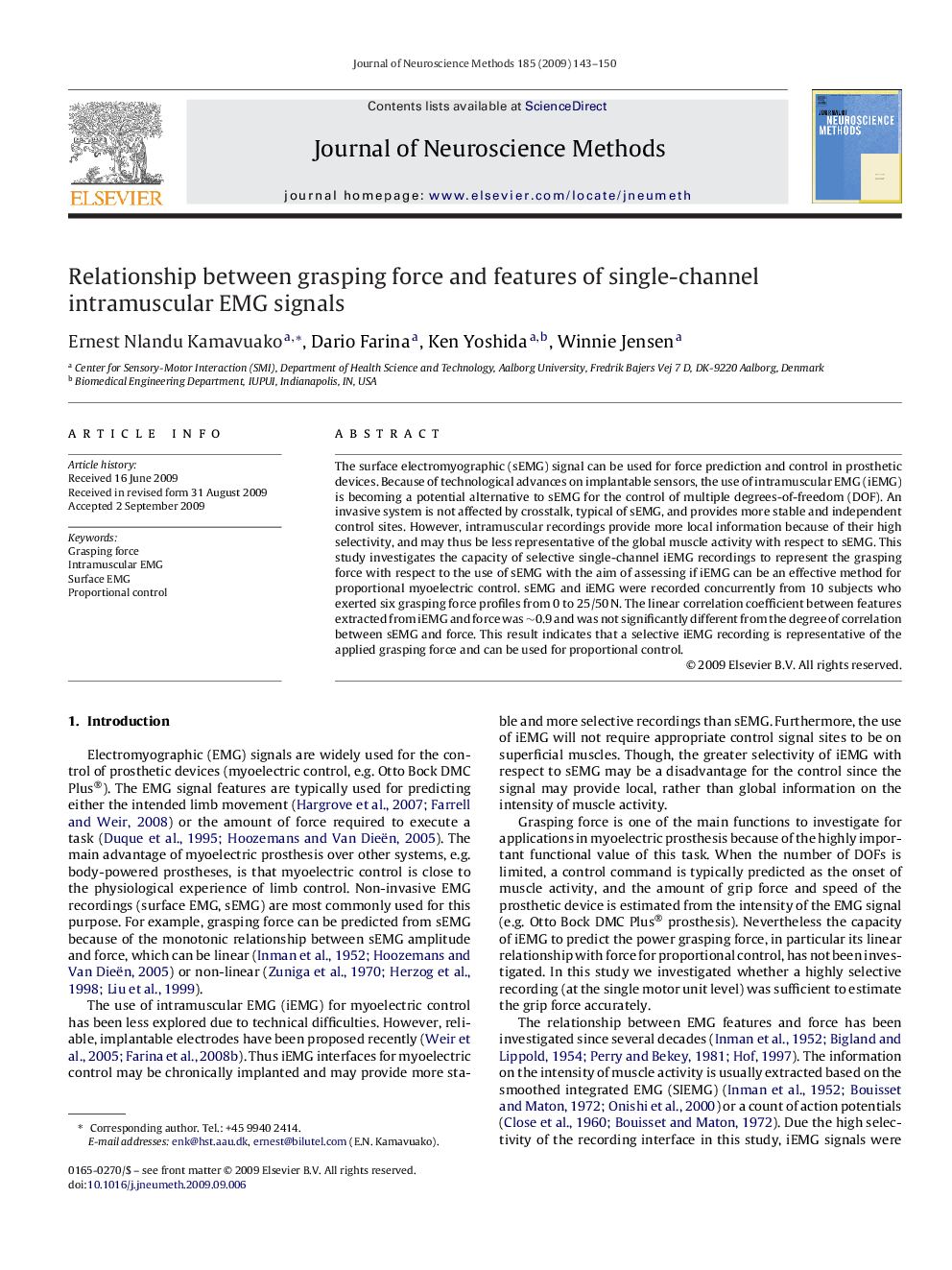| Article ID | Journal | Published Year | Pages | File Type |
|---|---|---|---|---|
| 4335677 | Journal of Neuroscience Methods | 2009 | 8 Pages |
The surface electromyographic (sEMG) signal can be used for force prediction and control in prosthetic devices. Because of technological advances on implantable sensors, the use of intramuscular EMG (iEMG) is becoming a potential alternative to sEMG for the control of multiple degrees-of-freedom (DOF). An invasive system is not affected by crosstalk, typical of sEMG, and provides more stable and independent control sites. However, intramuscular recordings provide more local information because of their high selectivity, and may thus be less representative of the global muscle activity with respect to sEMG. This study investigates the capacity of selective single-channel iEMG recordings to represent the grasping force with respect to the use of sEMG with the aim of assessing if iEMG can be an effective method for proportional myoelectric control. sEMG and iEMG were recorded concurrently from 10 subjects who exerted six grasping force profiles from 0 to 25/50 N. The linear correlation coefficient between features extracted from iEMG and force was ∼0.9 and was not significantly different from the degree of correlation between sEMG and force. This result indicates that a selective iEMG recording is representative of the applied grasping force and can be used for proportional control.
